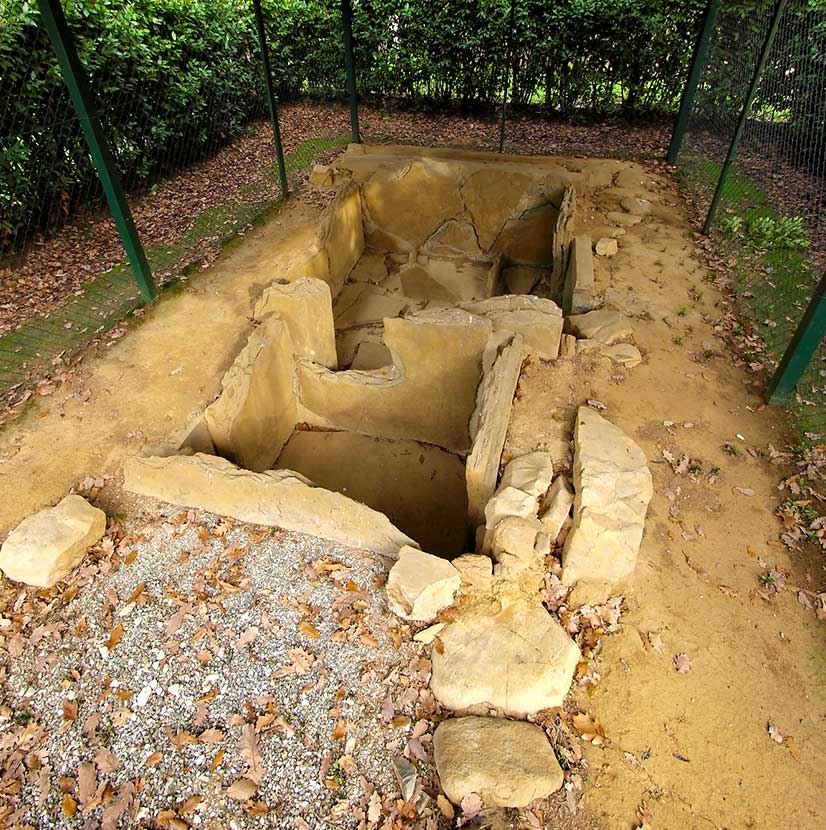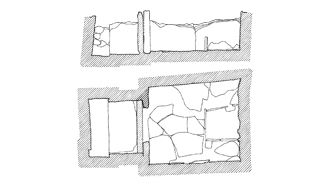Archaeological Areas
The Boschetti
tumulus

Archaeological Areas
The Boschetti
tumulus
Comeana, Carmignano (PO)
The extraordinary cultural and artistic development that affects the area during the Orientalizing period of Etruscan history is mostly apparent in Comeana, where the two monumental tombs of Montefortini and Boschetti suggest the high level reached by local patrons during the 7th century BC.
The Boschetti tumulus dominates the last curve of the access road to the town of Comeana and overlooks the present cemetery.
It is located in the small cemetery near the Tumulus, with a short downhill dromos blocked by a large stone slab which marks the access to a small rectangular room with a vestibule. From here you can reach the death chamber, closed by a slab, with walls made of stone elements that are identified by large interlocks thoroughly connected, so as to create tension and stability to the entire structure, we have to imagine that originally it covered the earth above the hemispherical tumulus.
The cell is paved with irregular slabs and in correspondence of the bottom wall it receives a small quadrangular theca, maybe used for cremation burials.
The Boschetti tomb
Option for educational visits
Info and booking at the Archaelogical Museum of Artimino
Tel. +39 055 8718124
The tumulus has been lowered considerably from its original position by the agricultural activity in the area (grapes were the last crop): the tumulus, the drum and external elements have not survived, seems to have lost over the centuries, at least four or five meters of its original height, including the upper part of the structure in stone.
Visitors, entering from the ramp which has been built to allow us to see the tumulus, can see the external part of the wall very well- and from above- the surviving structures, with their North-East and South-West orientations, that conserve a maximum height of 1.25 meters from the floor of the room.
From the artifacts that have been recovered from the site (and exhibited at the Artimino museum), it is possible to identify at least two deposits of ashes that belonged to people of two different sexes; and it is also possible to identify a ‘parter familias or princeps’ that is obviously a warrior, with wealth based on the production of grain and honey found on the property of his family; he also produced wine for the noble symposium and sported a athyramata of carved ivory and necklaces with ivory/bone, glass/ composite glass and amber: an examination of the artifacts and the type of architectural structure suggest dating this find between 670 and the middle of the 8th century BC.
Video




